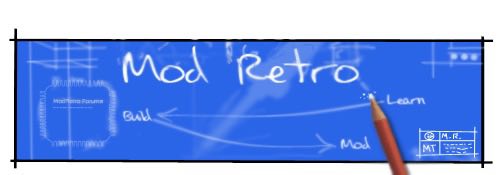wallydawg
Active Member

I have a GN-Twin in my possession, which is essentially an FC-twin but with a Genesis and NES combination clone console. Bought it at a thrift store ($4) pretty much just for a replacement NES 72-pin connector off of the NES side. Even though Genesis clones aren't that great at all in a general sense (this one is no exception), it still works so I might as well do something with it. The board is actually pretty small so hey, how about a 3D printed Mini Sega Nomad portable?
3D Printed Specs:
106.3 grams of filament, roughly 1/10 of a 1kg spool at an average of about 7.1 hours (426 minutes) with 9 Pieces total. The big front and back pieces take up the most time. I'll probably space it out over a few days so it's not so soul crushing. Around 24 hours as well designing it, but not sure how much of that is just opening it and not doing anything to it which happens a lot. Some time was spent widening and lengthening the case parts for a little bit more room just in case.
Front piece: 25.0g 114 minutes
Back piece: 28.6g 122 minutes
Dpad front piece: 11.1g 69 minutes
Dpad back piece: 10.1g 57 minutes
Top piece: 14.8g 65 minutes
Bottom piece: 14.4g 65 minutes
Side piece: 6.6g 30 minutes
Spacers for front & back: 3.1g 15 minutes each
A,B,C Grey buttons 2.0g 13 minutes
X,Y,Z Black buttons 1.6 11 minutes


Designed in AutoCAD in several sections to make it easier to 3D print and assemble.

Even though the controller ports look like Genesis (even famicom I guess), they are neither of those and some strange proprietary controller. Stone Age Gamer made a guide to use SNES controllers on the FC3, which thankfully the GN-Twin uses the same type of controllers.

It's kinda cool how the controller is mapped to Genesis, with the left "Side" of buttons being A, B, C from bottom to top, and the right "side" is X, Y, and Z. Select might be "mode" but who knows, I have nearly 300 genesis games and don't think I've ever had to use that button so that's just a guess. Obviously button placement won't matter as I'll chop up the controller for "normal" 6-button Genesis button placement.

Wired up a SNES controller board for tests and everything works well. I can remove the top board with the power and A/V connections, and the bottom board with the controller ports. I was hoping to remove the NES board as well, but all the controller signals to convert between Genesis to NES is on that board. Luckily it's pretty flat with the 72 pin connector removed so I just rewired the ribbon cable between them and will fold it over.

Here's where the controller signals are converted, into these three chips, which are labeled HCF4066. There's some schematics online and all that so I could probably decode it and use Genesis controllers but I have a spare SNES clone controller and no space 6 button Genesis controllers so it's no big deal.

Printed out the case design at 1:1 to test out it's overall size (compared to the Nomad) and to the console motherboard itself. Overall size is about ~140mm x 76mm x 26mm, much smaller than the original Nomad. Hopefully this will remain the actual size but it may vary by a millimeter or two in the width or height direction, but it is close.

Chopped up the controller really good for the button placements, as I had to rearrange everything with B, X, L being ABC and A, Y, R at XYZ. Superglued it to a piece of polystyrene for support

Tested with my papercraft model, everything good so far.

Did some controller work over the weekend. Cut it into three pieces and etched off some solder mask to reconnect the traces. Got a little too close on the upper left as it lifted almost all but a little section almost right next to the glop top but somehow I was able to salvage it. Hotglued everything down to hopefully stop any accidental tugs for the wires to break.

Here's an overall shot if the completed controller. Some of the wires are a bit too long/messy but I just wanted to make sure everything was still in working order. Luckily there are pads on all the connections so I didn't have to etch mask away for everything.















